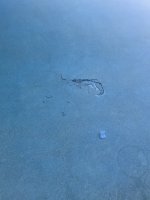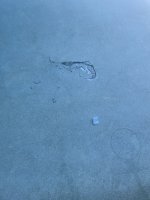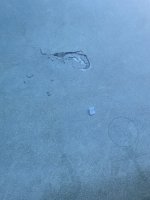simon SPRAGG
In The Industry
Brilliant article.There are proper steps to follow for the making of durable pool plaster. There are also improper practices that can lead to early deterioration or discoloration. Following is a ten-point checklist that will help achieve a lasting and discoloration free plaster.
1. The best cement/aggregate ratio is about one part cement to 1.5-1.75 parts aggregate (marble sand). If the plaster is too rich (cement-heavy), it tends to shrink and crack. If it's too lean (more sand), it will be less durable and potentially unworkable. Note: Always select high-quality and appropriate-grade cement and aggregate.
2. When mixing plaster, a thick mix is best. Shoot for a water/cement ratio of .48 or less. Both the American Concrete Institute (ACI) and the Portland Cement Association (PCA) maintain that lower water/cement ratios produce better-quality cement that can withstand occasional exposure to mild acids.
Lower water/cement ratios boost density while reducing permeability, porosity, shrinkage (craze cracking) and water movement within the cement product. Higher water/cement ratios, by contrast, cause excess shrinkage and cracking, and fail to offer adequate protection or long-term durability against the effects of water and the environment.
3. A plaster mix should be mixed thoroughly, but also not too long. It is recommended that if the plaster has been mixed for more than 90 minutes, the plaster mix should be discarded.
4. Plaster should contain as little calcium chloride set-accelerant as possible and never more than 2 percent to the amount of white cement. (Colored plaster, of course, should not contain any calcium chloride as it will lighten the color and become blotchy.) According to the PCA and other testing facilities, too much calcium chloride increases gray mottling discoloration and cement shrinkage. Several alternatives to calcium chloride that do not exhibit these characteristics are now available. The plastering of typical size residential pools shouldn't be completed in less than 4.0 hours.
5. Never add water to plaster surfaces while troweling. Both the ACI and PCA have found that this may increase porosity, shrinkage, and variable (white or light) discoloration. A little water to lubricate the trowel, however, likely will not harm the plaster surface.
Still, you never want to work, or force, additional water into the plaster surface when troweling. Doing so can weaken the surface and may accelerate deterioration and caused spotting or streaking discoloration. Dark colored plaster is even more susceptible to white spotting and streaking discoloration from too much water troweling.
6. Well-timed hard troweling can help produce a nice, dense plaster finish. But if the plaster becomes too hard before a smooth surface is achieved, continued hard troweling will often result in dark gray discoloration and spotting, especially when calcium chloride is also used.
7. Plastering in extreme weather conditions can lead to quality and durability problems. Industry groups specifically warn against using cement-based products in temperatures considered too hot or cold. The plastering process should take at least 4 hours to complete for typical residential pools.
One solution is "tenting" the pool, which protects the plaster surface (and the plasterers!) from the elements. In extreme dry heat, tenting the pool, and perhaps even directing air from an evaporative cooler beneath the tent, will help the plaster retain its moisture, and properly cure and harden without cracking.
8. Do not fill the pool with water too soon. Though conditions vary, water usually should not be added for at least six hours after the pool has been plastered and finished. This should be enough time for the plaster to harden properly before being submerged in water. It needs to be understood that the bottom or "bowl" area of the pool is the last and final section of the pool to be finished, and the walls are finished first. The bottom area of the pool needs to hardened before being submerged in water, whereas the plaster walls don't see water until many hours later, which is the way it should be. Even balanced tap water can dissolve certain plaster components if the surface has not adequately hardened. The end result is often greater porosity and early deterioration, which may take a few months to show up as a different shade of color on the bottom of the pool.
9. Soft or aggressive fill water can also deteriorate new plaster surfaces; and the effect is uniform. Ensure tap or fill water is balanced with sufficient TA and CH before using to fill the pool. Other new plaster problems such as drips, splotches, spotting, trowel marks, and hand- and footprints are the result of localized finishing errors.
Surfaces may be further damaged by aggressive (acidic) startup techniques, which can cause additional uniform surface loss. By contrast, baking soda startups can neutralize aggressive fill water while promoting a superior plaster surface.
10. Once the pool is filled, balance the water (and keep it balanced). Balanced water helps help preserve the plaster. Aggressive water causes uniform etching, while over-saturated water scales plaster. The Saturation Index is a good guide to prevent scaling or etching, water should have a saturation index value in the range of -0.5 to +0.5.
EDIT: It is acknowledged that adhering to quality standards will lengthen the time it takes to plaster pools. Generally, a plaster crew should spend at least four hours or more to plaster a typical residential pool. If it takes only three hours, that might mean it was done too fast and may result in plaster problems appearing later. During cold temperatures, it may take six hours or more to do the right job.
We emphasize that quality over quantity must prevail to ensure the rights of homeowners to quality products, and a responsibility to builders to ensure a commitment to quality of their projects.
With reasonably consistent maintenance, standard plaster has a life span of approximately 20 years. It is an inherently strong surface, and should be able to withstand real world chemistry and/or maintenance challenges.
Though pozzolans, blended cements and other materials are generating good results, there is still no substitute for solid workmanship. The above guidelines will benefit pool plasterers in the pursuit of a quality, long-lasting pool finish.
For how to personally supervise the plastering process, see this link: A Plastering 'Watch List' | Professional Watershaping | Watershapes
For further info on plaster discolorations and defects, see this post: Being Blamed for Plaster Discolorations? Don't Get Hoodwinked
So many pools are built by builders who simply don't care about pools and don't understand water. This is a very valuable contribution to the swimming pool industry world wide resources...
Thank you.




